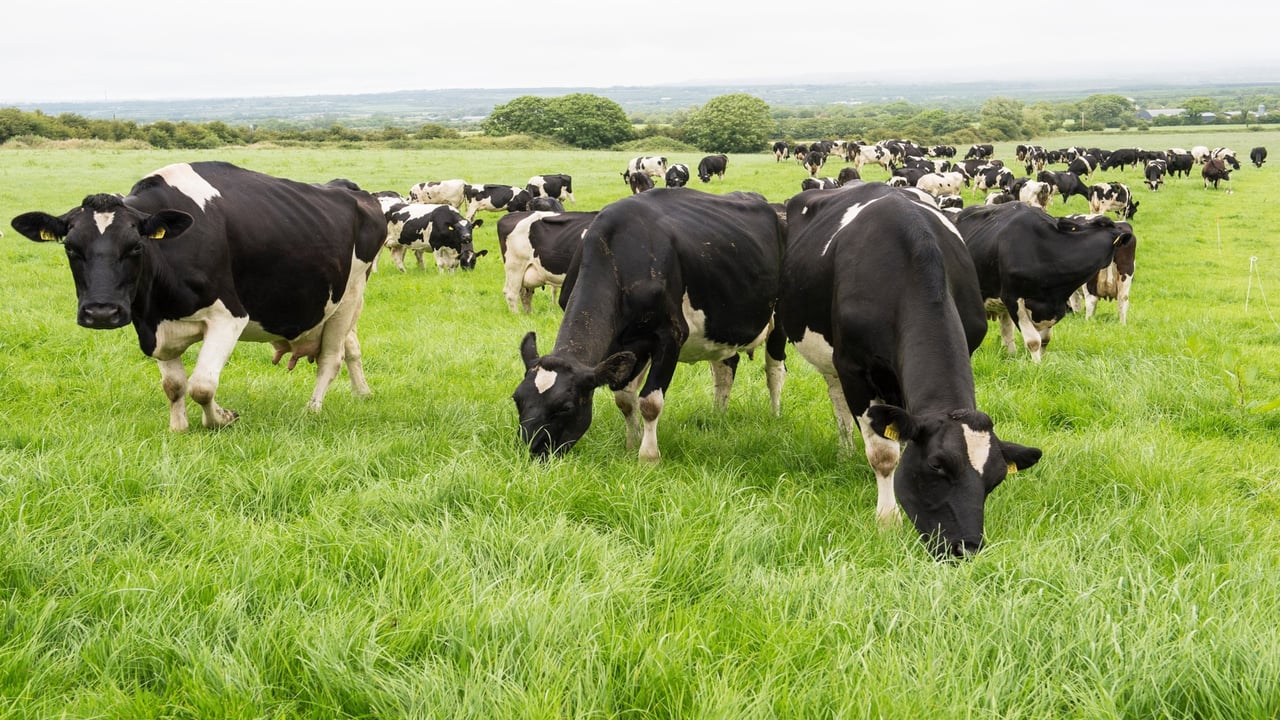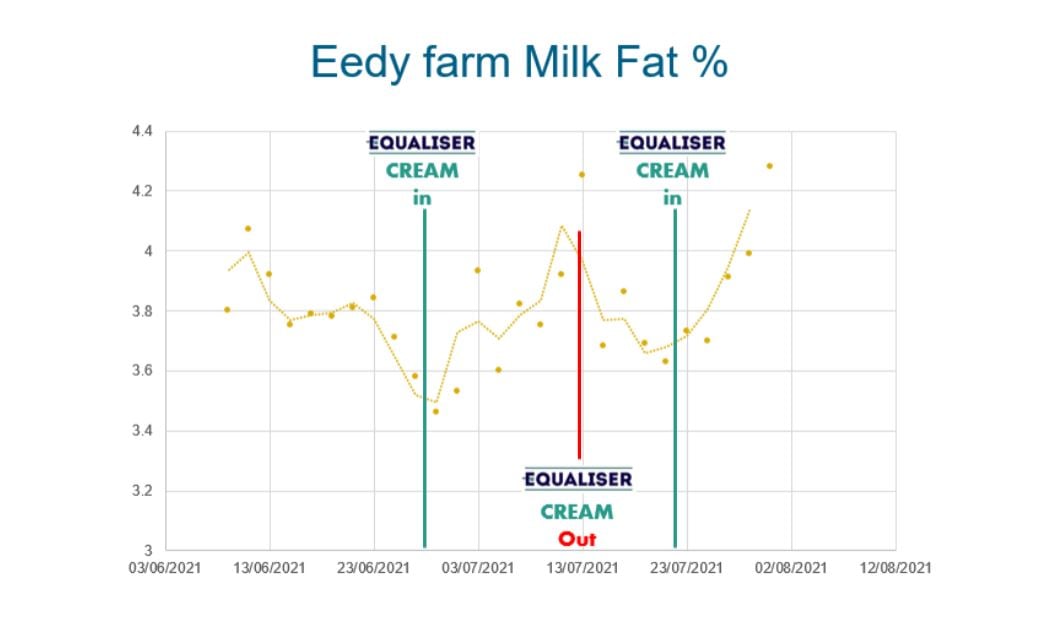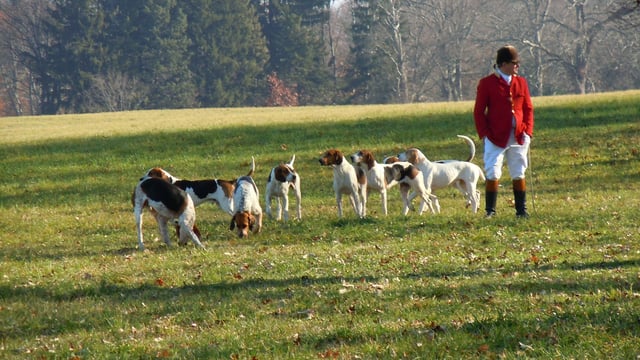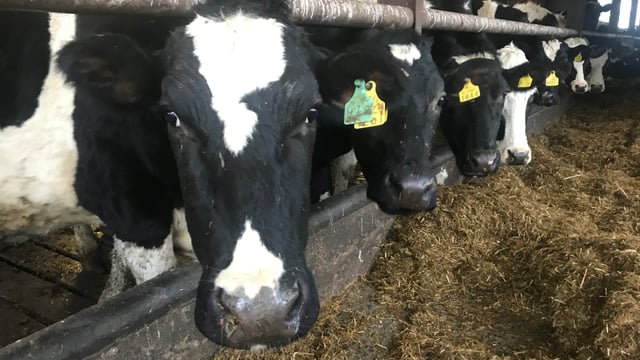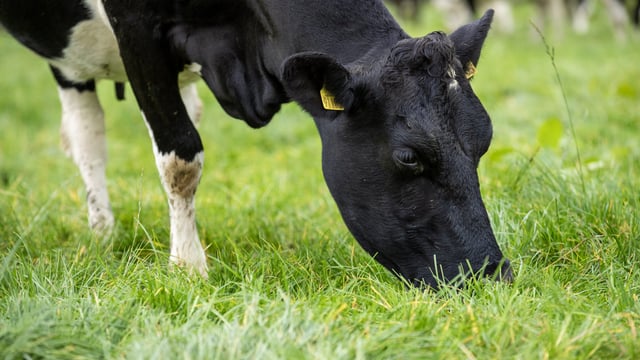Sponsored Article

Sponsored Article
Keeping the cream on top post-turnout
Sponsored Article

Butterfat in milk typically dips in spring when cows go out to fresh grass - and it can stay below the herd’s annual average through the summer months.
But this doesn’t need to happen, as one west Cork-based producer found out in 2021.
An improvement in the farm's ration bolstered the herd’s butterfat to well above its typical spring and summer levels, and its success means that the same menu will be repeated this year.
High milk solids derived from an efficient cow are the cornerstone of success for the Helen family’s Eedy herd of pedigree Holsteins. So when milk tank butterfat levels dipped in July 2021, there was cause for some alarm, and quick action, to get cows back on track.
The family's 90-cow herd averages 9,500kg of milk, at 4.1% fat and 3.4% protein and 720kg of solids, with 5,400kg of milk – almost 60% – of yield from forage.
Cows calve for nine months of the year, leaving a three-month gap in mid-summer.
“This calving pattern suits us, and we benefit from a winter milk bonus from October to February. Also, very few cows are dry in early summer when grass quality is highest," said Jason Helen, who runs the herd with his parents Robert and Sylvia on the 57ha unit.
The Helens supply 800,000L of milk a year to Lisavaird Co-op for manufacturing, so milk solids are vital.
“Feeding is crucial to our success,” Jason added.
So when butterfats took a dive in July 2021, there was cause for concern.
“Butterfats are always lower when cows are at grass. We target an average of 3.9% in spring through to late summer," said Jason.
Speaking to their adviser, they attributed this dramatic drop in milk fat to the high oil content in the re-growth of lush grass in reseeded pastures after first-cut silage.
The Helen's neighbour, who works for their local farm supplier, brought the rumen buffer Equaliser Cream to their attention and they decided to add it to the ration.
“It was really like a silver bullet. Milk fats jumped back to 3.8% in just a few days – and stabilised," Jason said.
Milk fat continued to increase and within a week they were above 4.2%, as shown in Figure 1 below. This was maintained throughout August.
“During the winter, our butterfat levels average 4.7%. While we wouldn’t expect to average this all year, adding a dedicated cost-effective rumen buffer in the summer months to boost butterfats and reduce the challenges of milk fat depression is progress for us,” said Jason.
The Helen’s have an abundance of grass and grow plenty of maize for silage. Grass and maize silage, along with bought-in chopped fodder beet, brewers’ grains, urea treated wheat and soya, make up the herd’s winter ration.
Forages are supplemented with 2t of concentrates/cow, which is fed to yield in the parlour. Concentrate protein content is 21% in winter, dropping to 16% during the summer.
Cows are turned out during the day from March 1, and re-housed full time by November 1. Grass-based diets are supplemented with a total mixed ration (TMR) buffer after evening milking comprising 10kg of maize silage and 2kg beet pulp, plus chopped straw for added fibre.
“We’ve included a rumen buffer in the TMR all year round to stabilise the diet and maintain rumen health as the diet, and particularly the forages, change,” added Jason.
“But we’ve reaped the benefits of switching to a specialist buffer that can help us counter dips in butterfat cost-effectively.”
A large proportion of dairy herds are affected by milk-fat depression at turnout and through the early grazing season.
“Drops of 0.5% in milk fat are typical, and usually occur during the second and third grazing rotations – between three and nine weeks after turnout,” said Cargill’s ruminant technology manager Philip Ingram.
He added that the greatest risk of reduced milk fat is seen where cows are grazing young, green leafy grass
“This grass has lower structural fibre, so digests quicker, as well as higher sugar content, which can create acidic rumen conditions," he said.
“The combination of the acidic conditions and the high oil content in fresh grass creates a ‘perfect storm’ in the cow’s rumen and disrupts the usual pathways used by the cow to produce milk fat,” added Dr. Ingram.
“Under these conditions, dietary oil is converted to conjugated linoleic acid (CLA). This is an oil that disrupts the fat production pathways and causes a depression in milk fat.”
Equaliser Cream is a specialist rumen buffer designed to target the causes of milk fat depression.
“Most buffers tackle rumen pH as a means of mitigating milk fat depression, but they are not consistently effective. Instead, cream has key ingredients to help reduce the impact of the high oil content of grass on milk fat,” said Dr. Ingram.
“It can promote milk fat production in housed herds too, where highly digestible diets are being fed, or where the silage has a high acid load, or where there is a high level of oil from distilled co-products.”
Alternatively, click here.
Sponsored Article


